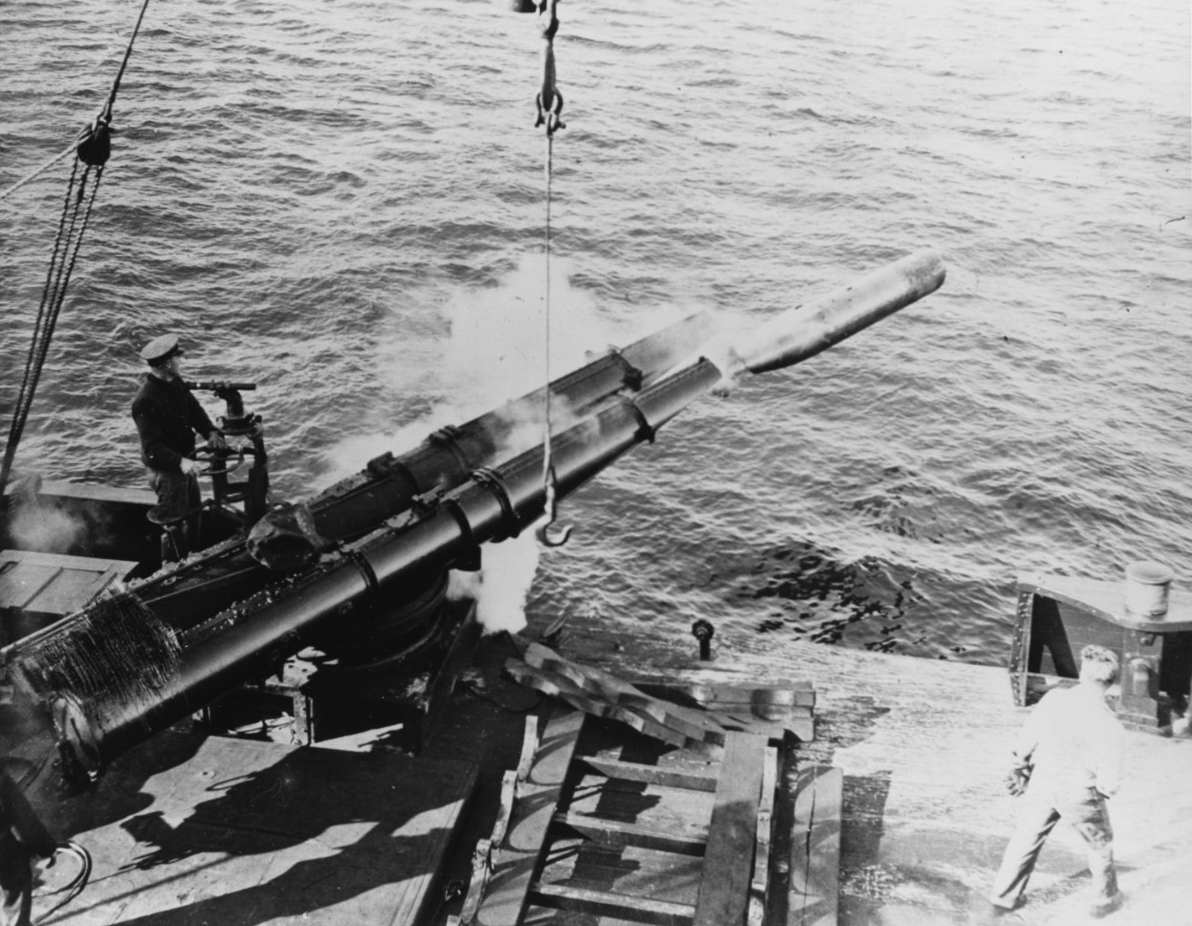The Admiral Saunders class used the same hull as the Christensen
class with five years of upgrades and improvement incorporated
into it. New boilers added a bit more power to the engines for a
two knot increase in speed. Necessary to keep ahead of the Fleet
in Scout mode. The four inline 6" gave a much better broadside
capability with a uniform gun size. Much easier for the range
finder on the bridge to make corrections from. The torpedoes had
their own rangefinder on the bandstand between the aft 6" and
the powerboat. An altogether much cleaner design
These ships proved the inline dominance for light cruisers over
the 'broadside' cruisers that were being built for the Royal
Navy (see
Chatham Class and
Birmingham Class). The Royal Navy then turned around and
built 50 odd of the 'C' type light cruisers with inline
armaments.
The early part of WW1 the ships were grouped with two Mikkelson
class cruisers to form a hunting group for locating Admiral
Spee's cruiser squadron. 1915 and the group was transferred to
the Mediterranean as the 6th Cruiser Squadron operating with the
pre-dreadnought Fleet that was tasked with taking the Gallipoli
Peninsular and forcing Turkey out of the war. The rest of the
war was spent in this duty. One ship being torpedoed and sunk by
a U-boat in 1917. None of the remaining three ships made it to
WW2 the last being scrapped in 1938.
| Displacement | 3,900 tons standard, 4,300 tons full load |
| Length | 436 ft |
| Breadth | 46 ft |
| Draught | 17 ft |
| Machinery | 4 shaft, steam turbines, 30,000ihp |
| Speed | 27 knots |
| Range | 5,000 miles at 10 knots |
| Armour | 2" side, 1" deck |
| Armament | As completed 4 x 6" (4x1) 2 x 4" (2x1) replaced with 3" AA in 1917 2 x 2pd (2x1) replaced with 2pd AA in 1917 |
| Torpedoes | 4 x 18" (2x2) |
| Complement | 420 |
| Notes | Admiral Saunders - Commodore Roe - General Hawkins - Senator Handley - |
| Torpedo away! |
